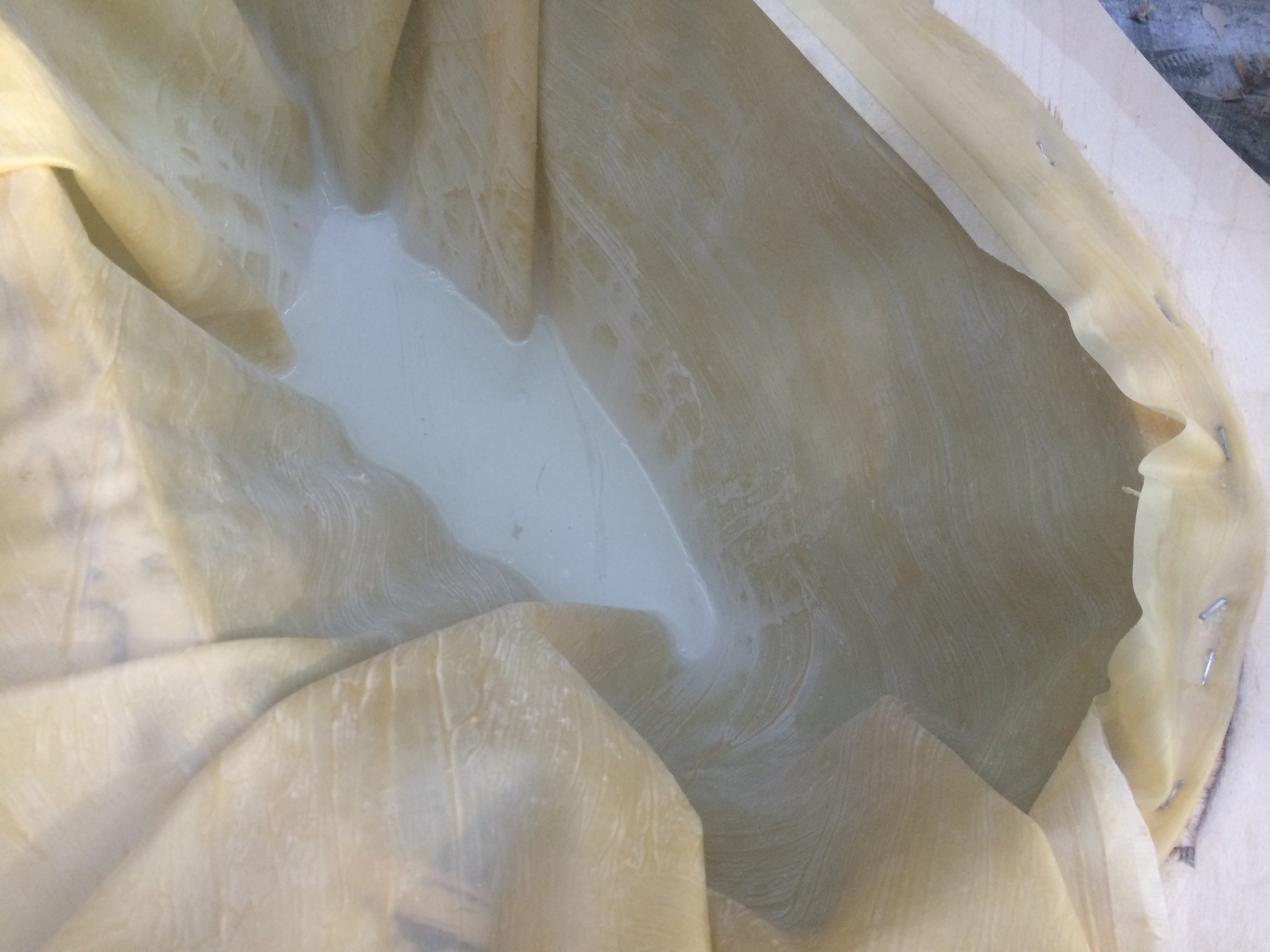This project aimed to create an unusual veneer/laminate system and deploy it in a surprising way. The project created composite sheet material assemblies of latex and wood veneer. These sheets were to be used to create a project that would have a hidden or unexpected aspect. In this case, a platform table was constructed from plywood embedded with hidden air channels. The table is able to be inflated to deform the latex and wood tile composite top. The bottom is able to separately inflate to reveal a latex leg system. Two seemingly disparate materials and structural techniques are combined to create a novel material and product. The natural grain and associations of wood combined with the foreign synthetic and smooth latex, creates a surprising and effective material dichotomy. The two materials are able to create a structure wavering between solid framing and inflatable/pneumatically derived systems. Meanwhile, the product creates a sense of mistrust and surprise, a false image of a solid table transformed before the eye.
Initial tests of the wood and latex composite material yielded a series of possibilities and complications. The wood tiles could be cut in a variety of shapes, each providing various amounts and directions of flexibility. A triangular grid was chosen in particular, as it possessed the ability to flex in three directions, and for its ease in scaling and tessellation. The wood veneer grid was then explored both without and with gaps between tiles as a means to control flexibility and allow for expansion forces from inflation. In addition, tiles were left bare faced or sealed with liquid latex as a means to improve durability.
The initial tests proved the latex, both premade sheets and liquid, to be a difficult material to control. Latex sheets bubbled in contact with many glues, especially rubber cement and similar flexible rubbery cements. However, rubber cement and goop proved to be most effective in securing the wood and latex combination. Wood glue or Elmer’s all purpose glue was used to provide a weak bond between materials. This weak bond was utilized so as to be able to glue entire sheets of laser cut tiles to the latex, and then remove any frame elements (used to create gaps) from the latex sheet.
The final sample selected for the table was an organic triangle tile pattern ranging in size (measure of the sides) from 1/2”, 1”, 2”, up to 4”with a gap of 1/16” consistently between. The material provided opportunities for flexibility and varied deformation based on concentrations of tile sizes.
The table was derived from plywood sheets cut into thirds, and CNC milled into a series of 8 laminated sheets. These sheets included a top and bottom with cut outs for the inflatable latex portions, a cap piece with air channel opening, and the middle layer of air channels and inner structure. The pieces were painted with liquid latex to create air tight cavities. Premade clear latex sheets were painted with an additional layer of liquid latex to add dimensions.
The air channels were painted with liquid latex to create an air tight cavity upon capping. The opening to the air channel (for the air compressor to engage with) was provided with a hose of a simple straw tubing covered in latex extending beyond the inner channels.
The bottom bladders, serving as the legs, were constructed by first approximating an offset of the bottom voids. Hanging the bottom of the table at the desired height, the latex sheet was pushed through the opening, and roughly positioned with brick weights. The bladder was filled with water to simulate the expanded bladder, and keep the material taught while working. This allowed for a way to adjust the depth of the latex to be even each step of the way. The latex was then adjusted, pleated, glued (with rubber cement and goop) and stapled in a circular direction. Several final coatings of goop were added to seal any holes and keep the staples in place.
After the bladders were attached, the finished plywood sheets were glued and vacuum formed to provide a tight seal. The table top was then constructed using the previously explored methods of fabrication. The laser cut pieces were glued sheet by sheet and a break away frame was cut out, leaving the triangle tiles and gaps. Two final coats of liquid latex were applied on top of the wood tiles before adhering the surface to the table frame.




















